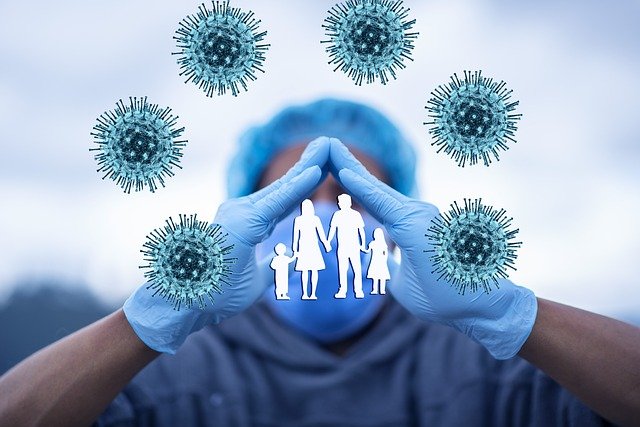Learn How to Spot Heart Attack Warning Signs Early
Heart attacks are serious medical emergencies that can have life-threatening consequences if not recognized and treated promptly. Understanding the early warning signs of a heart attack is crucial for seeking timely medical intervention and potentially saving lives. This article will explore the common warning signs of a heart attack and provide guidance on how to recognize them early on.

What are the most common heart attack warning signs?
Heart attack symptoms can vary from person to person, but there are several common warning signs that everyone should be aware of. The most typical symptoms include:
-
Chest discomfort or pain: Often described as pressure, squeezing, fullness, or pain in the center of the chest, this sensation may last for several minutes or come and go.
-
Upper body discomfort: Pain or discomfort in one or both arms, the back, neck, jaw, or stomach can also be indicators of a heart attack.
-
Shortness of breath: This may occur with or without chest discomfort and can be a sign that the heart is not functioning properly.
-
Cold sweat: Suddenly breaking out in a cold sweat, especially when accompanied by other symptoms, can be a warning sign.
-
Nausea or lightheadedness: Feeling sick to your stomach or dizzy without an apparent reason may be cause for concern.
It’s important to note that these symptoms can develop suddenly or gradually over hours or even days.
How do heart attack symptoms differ between men and women?
While chest pain is the most common symptom for both men and women, the presentation of heart attack symptoms can differ between genders. Women are more likely to experience some of the other common symptoms, particularly shortness of breath, nausea/vomiting, and back or jaw pain. Additionally, women may also experience:
-
Unusual fatigue: Extreme tiredness that is out of the ordinary, especially for several days.
-
Sleep disturbances: Difficulty sleeping or waking up feeling unrested.
-
Anxiety: Feelings of stress or a sense that something is wrong.
-
Indigestion or heartburn: These symptoms may be mistaken for gastrointestinal issues.
Understanding these gender differences can help both men and women recognize potential heart attack symptoms more effectively.
What should you do if you suspect a heart attack?
If you or someone around you is experiencing symptoms that could indicate a heart attack, it’s crucial to act quickly. Here are the steps you should take:
-
Call emergency services immediately: Don’t wait to see if symptoms improve. Every minute counts when it comes to heart attacks.
-
Chew and swallow an aspirin: If you’re not allergic to aspirin and have it readily available, take one. Aspirin can help prevent blood clots.
-
Stay calm and rest: Try to relax and sit or lie down while waiting for help to arrive.
-
Unlock the door: If you’re alone, unlock your front door so emergency responders can enter easily.
-
Stop any activity: If you were engaged in physical activity when symptoms started, stop immediately.
Remember, it’s always better to err on the side of caution when it comes to potential heart attacks. Even if you’re unsure, seeking medical attention promptly is the safest course of action.
How can you assess your risk for heart attack?
Understanding your risk factors for heart disease can help you take preventive measures and be more vigilant about potential warning signs. Some key risk factors include:
-
Age: The risk of heart attack increases with age, especially after 55 for women and 45 for men.
-
Family history: If close relatives have had heart disease, your risk may be higher.
-
High blood pressure: Consistently elevated blood pressure can damage your arteries.
-
High cholesterol: Elevated levels of LDL cholesterol can lead to plaque buildup in your arteries.
-
Smoking: Tobacco use significantly increases your risk of heart disease.
-
Obesity: Excess weight puts additional strain on your heart.
-
Diabetes: This condition can damage blood vessels and increase the risk of heart disease.
-
Sedentary lifestyle: Lack of regular physical activity is associated with higher heart disease risk.
Consult with your healthcare provider to assess your individual risk and develop a personalized prevention plan.
Can lifestyle changes help prevent heart attacks?
Adopting a heart-healthy lifestyle can significantly reduce your risk of heart attack. Here are some key changes you can make:
-
Quit smoking: If you smoke, quitting is one of the most important steps you can take for heart health.
-
Exercise regularly: Aim for at least 150 minutes of moderate-intensity aerobic activity per week.
-
Maintain a healthy diet: Focus on fruits, vegetables, whole grains, lean proteins, and healthy fats.
-
Manage stress: Practice stress-reduction techniques like meditation, yoga, or deep breathing exercises.
-
Control other health conditions: Work with your healthcare provider to manage conditions like high blood pressure, diabetes, and high cholesterol.
-
Limit alcohol consumption: If you drink, do so in moderation.
-
Get regular check-ups: Schedule routine health screenings to monitor your heart health.
By making these lifestyle changes and staying aware of potential warning signs, you can take proactive steps to protect your heart health and potentially spot a heart attack early if it does occur.
In conclusion, recognizing the early warning signs of a heart attack is crucial for prompt medical intervention. By familiarizing yourself with common symptoms, understanding gender differences, and knowing how to respond, you can potentially save lives – including your own. Remember to assess your risk factors, adopt a heart-healthy lifestyle, and never hesitate to seek medical attention if you suspect a heart attack.
This article is for informational purposes only and should not be considered medical advice. Please consult a qualified healthcare professional for personalized guidance and treatment.




